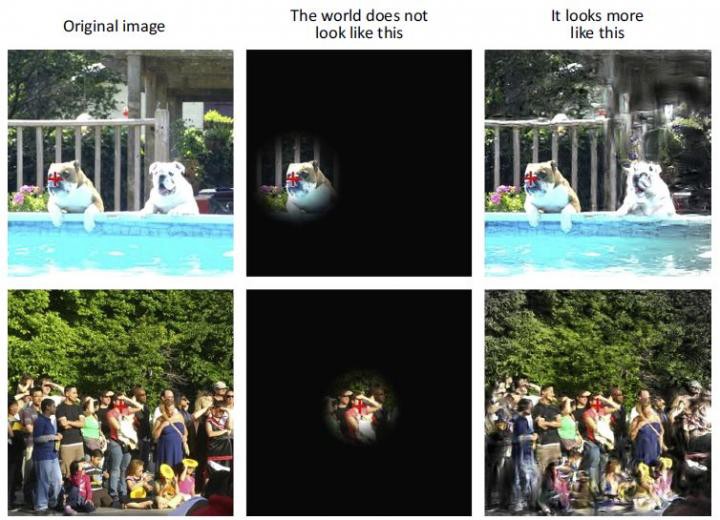Probing subjective visual experiences could help us understand consciousness, researchers say.
By Nathan Collins
(Photo: Damien Roué/Flickr)
Subjectively, vision is a rich sensory experience. But psychologists know it’s an experience built out of surprisingly little information: Our eyes’ ability to perceive details isn’t infinite, and even if it were, we couldn’t pay attention to everything at once. So how do we make the leap? According to a new opinion in Trends in Cognitive Science, we do it with averages and statistical ensembles.
There are countless experiments that demonstrate what we see is not the same as what’s in front of us. There’s inattentional blindness, in which we fail to even register usual objects passing through a scene. There’s also the fact that, shown a picture of a picket fence with the points cut off and then asked to draw what was in the picture, most people will still draw in the points. Somehow, our brains remove some things from our conscious perception, while filling absent details in others.
“There appear to be separate neural pathways for representing the forest and the trees.”
Why do we do that? According to Massachusetts Institute of Technology psychologists Michael Cohen and Nancy Kanwisher and Tufts University philosopher Daniel Dennett, we build visual experiences out of individual objects as well as “ensemble representations,” quick mental summaries of the overall structure of a scene. To see what they’re talking about, imagine you’re in the crowd at an outdoor concert. You’re probably paying closest attention to the band, so you perceive them in highest resolution. At the same time, it’s not tunnel vision. You also see the crowd around you, just not the same way. What you see is the crowd as a whole, not the faces it comprises—the forest for the trees.

In this figure, the red crosses represent the fixation spot and the focus of attention for these snapshots. The left column shows two images that have not been doctored in any way. The middle column shows how the world does not fade into darkness when it is not fixated or focally attended. The right column shows how the parts of the world that are not fixated and unattended are represented as an ensemble statistic or “gist.” (Photos: Cohen
et al
./
Trends in Cognitive Sciences)
In fact, there’s some evidence that the brain processes the ensemble—the gist of a scene, really—separately from the specific things we pay attention to. For example, the brain’s parahippocampal place area appears to be involved with processing overall features of a scene, such as its texture. “In other words, there appear to be separate neural pathways for representing the forest and the trees,” the authors write.
Cohen, Dennett, and Kanwiyher argue these observations may have important consequences for a broader understanding of consciousness. “The focus of consciousness research should be on the nature of visual information that is captured beyond the few high-fidelity objects” that we pay most attention to, so that researchers include both the forest and trees.

||





